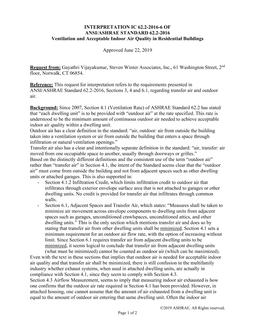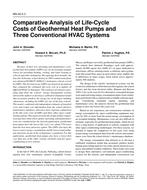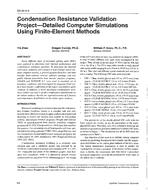This paper describes the development of a dynamic HVAC scheduling algorithm that defines occupied and unoccupied periods by occupancy thresholds as opposed to strict time zones. The performance of the methodology is demonstrated, through simulation, for an office building in London, England.
The building’s HVAC system is currently operated under a time-zone strategy. Occupied and unoccupied time zones are pre-set hours defined by the day of the week. The building services include heating, cooling, and ventilation. A single primary air-handling unit provides conditioned air at a constant speed during occupied hours. Additional heating or cooling is provided through the use of trench heaters and chilled beams. The trench heaters are thermostatically controlled while the chilled beams operate under PI control. The heating source is a plate and frame heat exchanger connected to a district heating loop and the cooling source is an air-cooled chiller.
Occupancy data for the building was collected by the building’s access control system. The building of 327 occupants has 2 access points. Entry or exit is allowed with the swipe of an id card with appropriate permissions. However even with the access control system in place, occupants gain entry or leave from the building without being recorded. This is due to “tailgating” where multiple people enter or exit the building by following another occupant. This feature has led to a data set with significant missing data and required a statistical method to repair that data that leveraged historical profiles of individual occupants. The repaired data is then used to forecast the day ahead occupancy which is used to determine the specific times the desired occupancy thresholds are met.
The building’s performance under the current time zone strategy and through the use of dynamic scheduling was estimated using a building energy simulation software. The analysis shows that dynamic schedules differ from the pre-set schedules, and depending on the occupancy threshold, can result in a 20% increase or a 15% decrease in HVAC related electricity consumption. When a hybrid approach is taken, the increase in energy consumption is mitigated.
Citation: 2017 Annual Conference, Long Beach, CA, Conference Papers
Product Details
- Published:
- 2017
- Number of Pages:
- 8
- Units of Measure:
- Dual
- File Size:
- 1 file , 880 KB
- Product Code(s):
- D-LB-17-C055


